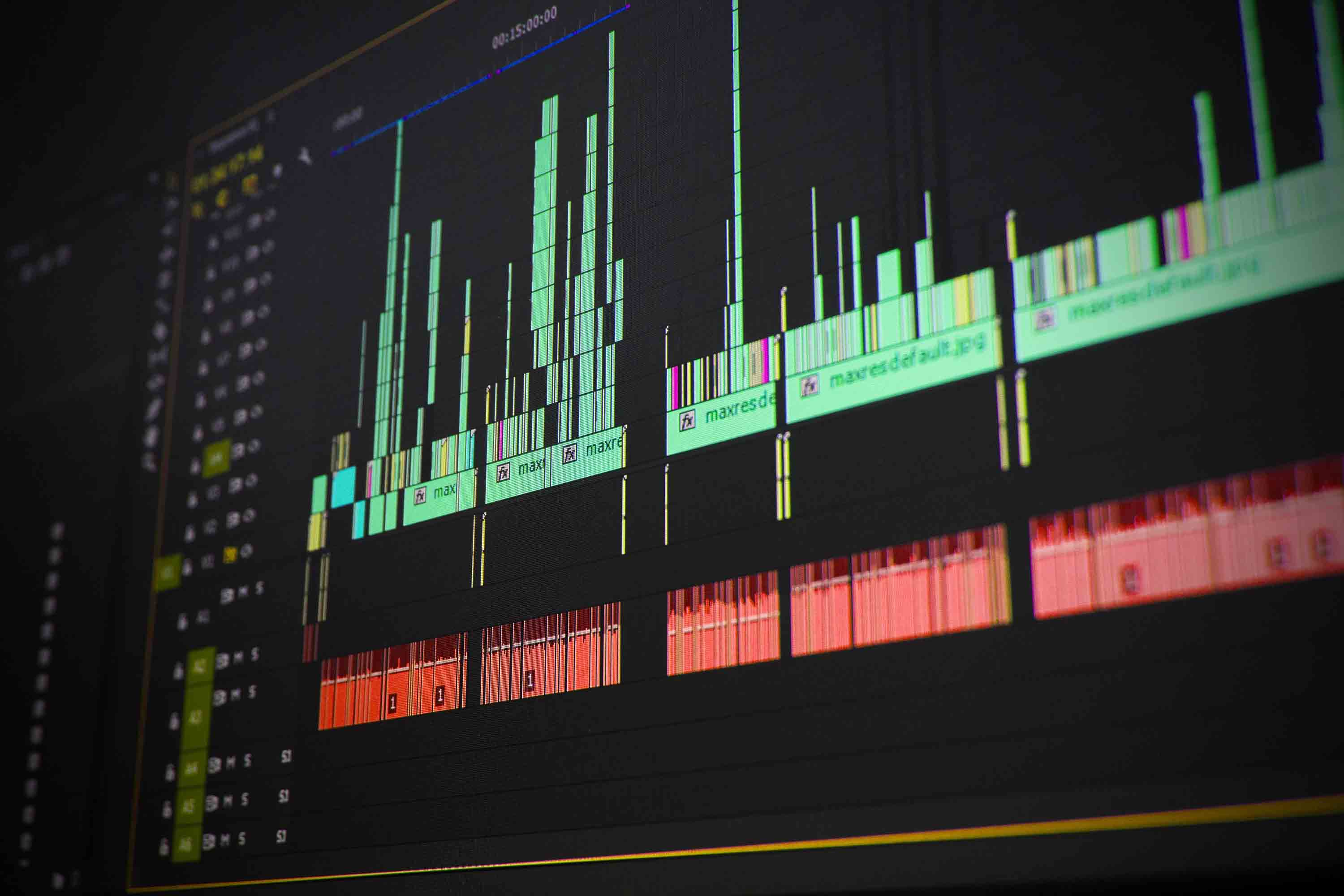
Everything you need to know about vocal arrangement
When put plainly, the vocal arrangement can be described as the way you sing your song. Not necessarily the words that you sing but the way you sing them.
A certain line may sound better when sung in your falsetto voice as opposed to your chest voice. Potentially the lyric you thought sounded best sung in a bouncy rhythm delivers a hell of a lot more emotion when sung in a drawn-out manner? Whatever the case, it's a great thing to be thinking about when writing your own music.
This is an idea that seems to get chucked on the back burner when it comes to writing songs, but honestly, it’s very important. By taking control of the way you deliver a performance you are propelling your self one step closer to mastering the art of songwriting.
So what should we pay attention to when arranging our vocals and preparing our vocal delivery?
Well….
vocal arrangement
Don’t split hairs when in the writing process
Right off the bat before you start cleaning up your vocal arrangement, its obvious that you need some lyrics to arrange.
Whilst in the process of writing the music and lyrics try not to split hairs over the arrangement of your vocals.
If you focus too much attention on how you sing your words whilst you are writing them it can drain your creative juices and disrupt your flow.
You will naturally develop a basic vocal arrangement in the writing process, which is a good place to start once you have all your lyrics in place.
Once you have some lyrics to play with, then you can dive into the arrangement.
vocal arrangement
Play your song over and over and over again.
One of the easiest ways to tackle the task of arrangement is to quite simply sing your song a bunch of times.
By developing a comfortability with the lyrics and chords you open up room to experiment with the way in which you sing your words. Which if nothing else is the least you should do when it comes to arranging your vocals.
This is generally when your natural subconscious character and voice shine through.
No one else naturally sings the way you sing, so experiment with your voice and be bold. Don’t be afraid to try things that might end up not making the cut. You will be amazed with what your subconscious mind produces when exploring ways of singing your song (especially when done without expectations).
Mess around here, every time you land on a way you sing a phrase that works, use that delivery as a home base for the line and expand on that.
Which brings us to the next point...
vocal arrangement
Record it all
Try and record yourself when experimenting with vocal arrangement. The mind can be as useless as it is impressive, forgetting the way something was sung almost instantly after you have sung it.
Remember that these recordings aren't by any means the studio version that will win you your grammy, so there's no need to perfect them. They are for you and your songwriting process.
You can listen back intently, picking up on the way you sang certain lines that work best and go from there.
A lot of people don’t do this. It might not break the song if you forget that one way you sang a line, but it defiantly won’t make the song either.
So don’t risk it.
 Quick recordings of melodies, lyrics, basically anything that pops into your head can turn into great song ideas.
Quick recordings of melodies, lyrics, basically anything that pops into your head can turn into great song ideas.
vocal arrangement
Pronunciation
The way you pronounce words can become your distinct style and distinguish your voice from others.
We recommend that you keep pronunciation natural and fluid.
Don’t forget that you have a unique voice and you must embrace it. Keep your pronunciation comfortable, you don’t want to be getting tongue-tied for the sake of trying to sound like your favourite musician.
The same goes for your accent. Its quite a strange phenomenon, the majority of people sing without an accent in a sort of global tongue. Having said that, some don’t. Embrace your accent and make it work for your style. You aren't doing impressions here. You need to be genuine and true to yourself.
If you don’t sing in an accent, that’s okay too. Whatever you do just don’t try and put one on.
People see through that and honestly, it can cheapen a performance.
Just be your self and sing in a way that is comfortable for you.
vocal arrangement
Length of words and notes
Walking hand in hand with pronunciation you must consider the length of words and notes that you sing.
A different cadence can present a different mood in your lyrics. Drawn out notes may shape more emotion than shorter notes.
This may depend on the actual lyrics that you have written so don’t be afraid to tweak your words here and there to enhance your vocal arrangement if it’s not quite sitting right.
Substituting in suitable synonyms for words that aren’t working is a good way to make sure things are flowing nicely.
vocal arrangement
Pitch correction
Experiment with the pitch in your vocal arrangement. Try switching it up by singing parts higher or lower.
You might find that singing a certain line at a higher octave creates natural movement throughout the song.
Or potentially singing it lower works better than before?
This depends on the song you are writing. Be mindful when varying pitch, keep it in line with the vibe of the song.
Testing certain phrases using your chest voice and head voice is a great way to create excitement and tension throughout a song.
You can also try matching your vocals to existing melodies and arranging on top of them or in conjunction with their notes and pitch.

vocal arrangement
Know when to pull back
A good vocal arrangement requires you to be conscious of how subtle you sing a line or phrase.
Be aware of over arranging. Meaning, be aware that you don’t overdo the theatrics in your voice. (Unless you are in theater!)
It’s a valuable skill knowing when to pull back on arranging and let the music speak for itself. Your vocal arrangement must gel nicely with your musical arrangement.
This applies to many sides of vocal arrangement. Perhaps a section of the song works better sung quietly? Perhaps it’s suitable to be belted out?
That's something that you will have to decide.
It can get too busy if you are doing vocal acrobats throughout the whole song.
Sometimes less is more!
vocal arrangement
Know your range
Whilst its an awesome idea to experiment and work on your vocal range for arrangement, it's also great to know the ins and outs of your voice.
Knowing what notes are comfortable for your voice helps you craft a sound that is your own.
Straining your vocals can be harmful to your singing. Arrange your vocals accordingly making your limitations work for you. Create a unique style you can call your own.
We recommend listening to Bob Dylan with this in mind.
His vocal arrangements were crafted perfectly around his somewhat shaky voice (sorry Bobby) and he produced music that was undeniably unique because of it (you're welcome Bobby).
Which brings us nicely into our final tip…
vocal arrangement
Study other musicians techniques
Just listening to music is like taking a music class in itself. Studying the vocal arrangements of not only your favourite artists but other artists too can teach and inspire your work.
Refrain from trying to duplicate their styles of course, but be aware of how different singers sing, taking on board how they do it.
As practice, you can find an artist that has a similar sounding voice to yours and become familiar with their vocal arrangements just to get a feel for how they arrange.
Alongside this, take note of their backing vocal arrangements. It's so easy to forget that there are harmonies and layered voices in songs we listen to.
But most often they are there and have been arranged in a certain way to enhance the track, so keep an ear out for them and learn from them!
 seriously, just listening intently to your favourite artists can help improve your songwriting skills.
seriously, just listening intently to your favourite artists can help improve your songwriting skills.
If you need a little injection of inspiration, have a listen to these songs and the artists that sing them. Their vocal arrangement skills are next level...
In no particular order:
Billie Eilish - Bad guy
Queen - Bohemian rhapsody
Norah Jones - Come away with me
Ed Sheeran - I'm a mess
Bon Iver - Holocene
Mumford and Sons- Delta
Rainbow Kitten Surprise -Hide
Paolo Nutini - Iron Sky
Kaleo - Can't go on without you
Kodaline - High hopes
James bay - Let it go
These are good examples, but you can learn from literally any song in the world. So keep your ears open when listening to music. Take note of how different musicians tackle their vocal arrangement. No go tackle yours!


